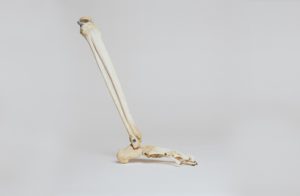Strength training is becoming more and more popular, especially among females, which is a great trend that we hope continues long into the future.
Gone are the days that the gym floor belonged to the blokey blokes and the ladies jumped in the lycra for some step classes.
Strength training has so many benefits that it isn’t hard to see why this trend is moving in such a positive direction and we will discuss some of these now.

Mental health
Strength training is shown to have positive effects on one’s mood and mental health as shown by O’Connor et al (2010). A study by Wescott (20120) showed that more and more people are turning to strength training to help with their mental health instead of, or in conjunction with their prescribed medication, with pleasing results. For some people, this can be enough to come off or avoid medication and for others, it can help reduce the dosage or simply help enhance the effects of the medication they are on (Stathopoulou et al, 2006).
(if you feel you need someone to talk to, please call lifeline on 13 11 14 or beyond blue on 1300 22 4636)

Bone health
Osteoporosis is extremely prominent in the elderly population and strength training is a great way to combat this. Wolfs law states that a bone will respond to the forces of which it is placed under. Simply put, if you place load (weights in the gym) on your bones, they will respond by getting stronger. Osteoporosis is when your bones become filled with holes and therefore weak. Strength training will reduce the number of holes and the rate at which these holes form (Galvao et al, 2010).
Gutin and Kasper (1992) showed that getting young girls involved in exercise at a young age can help with the prevention of osteoporosis later on in life with Bocalini et al (2009) showing that strength training preserved the bone density of post menopausal woman without having to intervene with hormonal replacement therapy. When you combine these two studies, and many more just like them, you can see that strength training is important for women throughout the course of their lives if they wish to live a fuller, more enjoyable, pain free life.

Heart health
Running and step classes wearing lycra are not the only way to work on your cardiovascular fitness, or your heart health. More and more women are turning to strength-based circuits to get their sweet sessions in as not only do you get the cardio component and all of its benefits, you simultaneously get the benefits from strength training.
Yu et al (2016) showed that strength training helped play a role in the prevention of cardiovascular disease. Just 16% of all Australian’s had optimal heart health (Peng & Wang 2018), whilst this is an extremely low number, we have seen this increasing in recent years thanks in part, to an increase in strength training and exercise as a whole.

Sport
Women’s sport is becoming more and more prominent and is forever moving towards a really viable option for women to take on as a career, which is a wonderful thing indeed. With this, we are slowly seeing more and more women recognise the importance of including strength sessions in their weekly training schedule. Strength training is a wonderful way to improve their in-game performance, reduce the likelihood of injuries and help them return from injuries sooner (Thiele et all, 2010). Due to a variety of factors, soft tissue and ligament injuries are quite prominent in women’s sport (Renstrom et al 2008) so it is a very pleasing trend to see more and more women from a younger age turn to strength training, as this is a great option to help mitigate this fact. Strength training has shown to decrease a range of injuries, especially the most prominent ACL injury in females. Dahab and McCambridge (2009) showed that not only is strength training safe for young women and adolescents, it is something we should be introducing from a younger age to help with these injuries as per above.
Strength, speed, agility and vertical jump are key factors in the majority of sports, especially team sports. It is well documented that strength training can help with all of these areas. Marious et all (2006) showed strength training directly correlated with an decrease in 30m sprint times, an increase in vertical leap and an increase in upper and lower maximal strength tests. When you consider all of these factors, it isn’t hard to see why strength training is becoming more prevalent among female athletes from a younger age, another trend we hope to see continue long into the future.

Fat Loss
More and more women are starting to realise that lifting weights won’t, in fact, make your big and bulky, but will, in fact, allow you to drop fat, get toned and get that butt, those arms, those legs you have always dreamed about.
Wills et al (2012) showed that resistance training helped to improve the body composition (more muscle less fat) of obese and overweight adults. Not only is strength training an effective method for obese individuals, it also works for general pop and recreational trained strength athletes (Baker et al, 2013) showing that no matter who you are, what level of experience, strength training will help you increase your body composition or in other words, it will help you lose fat and get more toned.

Powerlifting
Powerlifting is a growing sport, especially in Australia and especially among women. Strong is the new skinny can be seen all over social media and it is not uncommon to see women lifting weights some men could only dream about, we love to see this. Taking the focus away from how women look and putting it back on what they are capable of is a great thing not only for the woman themselves and their own mental health, sense of self, but for society as a whole.
Whatever your goals may be, whatever your experience may be, strength training can help you out in so many ways that it makes sense to include it, at least once, in your weekly routine. We promise you won’t regret it!
Reference
Baker, J. Davies, B. Cooper, S.M. Wong, D. P. Buchan, D. S. Kilgore, L. (2013). Strength and Body Composition Changes in Recreationally Strength-Trained Individuals: Comparison of One versus Three Sets Resistance-Training Programmes, BioMed Research International Article ID 615901, 6 pages, 2013. https://doi.org/10.1155/2013/615901
Bocalini DS, Serra AJ, dos Santos L, Murad N, Levy RF. Strength Training Preserves the Bone Mineral Density of Postmenopausal Women Without Hormone Replacement Therapy. Journal of Aging and Health. 2009;21(3):519-527. doi:10.1177/0898264309332839
Dahab, K. S., & McCambridge, T. M. (2009). Strength training in children and adolescents: raising the bar for young athletes?. Sports health, 1(3), 223–226. https://doi.org/10.1177/1941738109334215
Dirk Thiele, Olaf Prieske, Helmi Chaabene & Urs Granacher (2020) Effects of strength training on physical fitness and sport-specific performance in recreational, sub-elite, and elite rowers: A systematic review with meta-analysis, Journal of Sports Sciences, 38:10, 1186-1195, 10.1080/02640414.2020.1745502
Galvão, . Rebucci, A.P., & Lazaretti-Castro, M.. (2010). Physical approach for prevention and treatment of osteoporosis. Arquivos Brasileiros de Endocrinologia & Metabologia, 54(2), 171-178. https://dx.doi.org/10.1590/S0004-27302010000200013
Gutin, B., Kasper, M.J. Can vigorous exercise play a role in osteoporosis prevention? A review. Osteoporosis Int 2, 55–69 (1992). https://doi.org/10.1007/BF01623838
Marios, H; Smilios, I; Sotiropoulos, K; Volaklis, K; Pillandis, T; Tokmakidis, S P.(2006) Journal of Strength and Conditioning Research: November 2006 – p 783-791 https://doi.org/10.2147/CLEP.S235763
O’Connor PJ, Herring MP, Caravalho A. Mental Health Benefits of Strength Training in Adults. American Journal of Lifestyle Medicine. 2010;4(5):377-396. doi:10.1177/1559827610368771
Peng, Y., & Wang, Z. (2018). Cardiovascular health status among Australian adults. Clinical epidemiology, 10, 167–178. https://doi.org/10.2147/CLEP.S155783
Westcott, Wayne L. PhD Resistance Training is Medicine: Effects of Strength Training on Health, Current Sports Medicine Reports: July/August 2012 – Volume 11 – Issue 4 – p 209-216 doi: 10.1249/JSR.0b013e31825dabb8
Willis, L. H., Slentz, C. A., Bateman, L. A., Shields, A. T., Piner, L. W., Bales, C. W., Houmard, J. A., & Kraus, W. E. (2012). Effects of aerobic and/or resistance training on body mass and fat mass in overweight or obese adults. Journal of applied physiology (Bethesda, Md. : 1985), 113(12), 1831–1837. https://doi.org/10.1152/japplphysiol.01370.2011
Yu, C. C., McManus, A. M., So, H. K., Chook, P., Au, C. T., Li, A. M., Kam, J. T., So, R. C., Lam, C. W., Chan, I. H., & Sung, R. Y. (2016). Effects of resistance training on cardiovascular health in non-obese active adolescents. World journal of clinical pediatrics, 5(3), 293–300. https://doi.org/10.5409/wjcp.v5.i3.293

